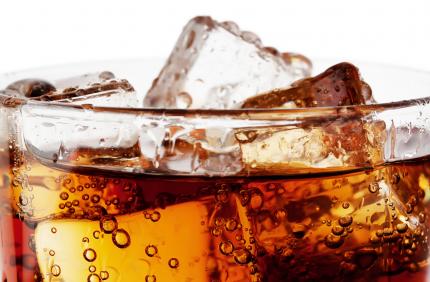Optimum Sports Nutrition


Diet Soda And Fat Gain
Q. I drink diet soda when cutting up and find that it crushes my hunger. Are there any down sides to drinking diet soda?
A. Great question! I think the answer may surprise you. If you are purposefully trying to trigger your body to reduce sports performance and to store body fat, then you should keep drinking diet soda. Diet soda isn’t appropriate for people trying to cut up. Here’s why: In our Human Sports Performance® Laboratory we have a saying: No carbs/no calories equals no performance. That’s a fact because the brain runs the game, and the brain works on carbs, not protein. No matter what sports drink or beverage or food you consume, everything you eat or drink affects performance and body programming. For example, all beverages consumed, including diet sodas, send a message to the brain and to the body. The message sent to the body takes from 15 to 25 minutes to be transported through the gut. The message received by the brain takes only 3 to 10 seconds to be received and actions taken. Ingesting diet soda that contains no calories, fat, or carbs sends the message to the brain to immediately send out insulin, which instigates major diabetic and fat-storing hormones and generates lipoprotein lipase (LPL), which is known in chemistry as the gatekeeper for fat storage in the fat cells. Stimulation of LPL will keep you from cutting up because it stimulates adipose tissue body fat storage, particularly in the abdominal region. Even mainstream medicine has accepted the fact that diet sodas send negative messages to the body/brain. America’s favorite doctor, Dr. Mehmet Oz, better known as host of the popular Dr. Oz television show, states that “Diet soft drinks and sodas store as fat.” “Switch from soft drinks (even diet sodas) to water. Sure, diet sodas have no calories,” says Dr. Oz, but, “Anything made with artificial sweeteners can trick the brain into thinking it’s real sugar. The brain then thinks it has enough incoming sugar and switches over to store all the calories as fat,” he explains. This isn’t news to us, as my research team pioneered this research and presented the data on a live four hour newscast for Clear Channel and Fox News on this very topic.
Your Brain Retains The Urge To Eat When Taste Buds For Sugar Are Stimulated
But it does show that the science has caught up with public awareness and validates the fact that all beverages deliver specific instructional-messages to the body/brain through a metabolic pathway called the brain-glycemic-indexing-cephalic-response. Scientific research has shown that the brain retains the urge to eat for a long time when the taste buds for sugar are stimulated, even without any sugar having entered the system. The sweet taste of artificial sweeteners such as aspartame will cause the brain to program the liver to store supplies rather than release supplies from its storage. Regular soda drinkers don’t fare well either while cutting up, as sucrose, glucose, and maltodextrins (typically used in sodas) stimulate the brain glycemic-indexing cephalic-response, as does acesulfame potassium, another common ingredient in sodas. In the near future, sports beverages will be available that don’t stimulate this negative neural-signaling feedback loop. But for now, instead of diet soda, make your own hydration drink using a low-glycemic fruit juice (such as 100 percent pure peach or pear juice) mixed with water (80 percent water and 20 percent low-glycemic juice). Don’t use a high glycemic juice (such as coconut, grape and/or white grape juice), or you’ll create a fat-storing message to the body. Contrary to popular belief, coconut juice has been proven in human in vivo clinical trials to stimulate the negative brain-glycemic-indexing cephalic-response feedback loop.

